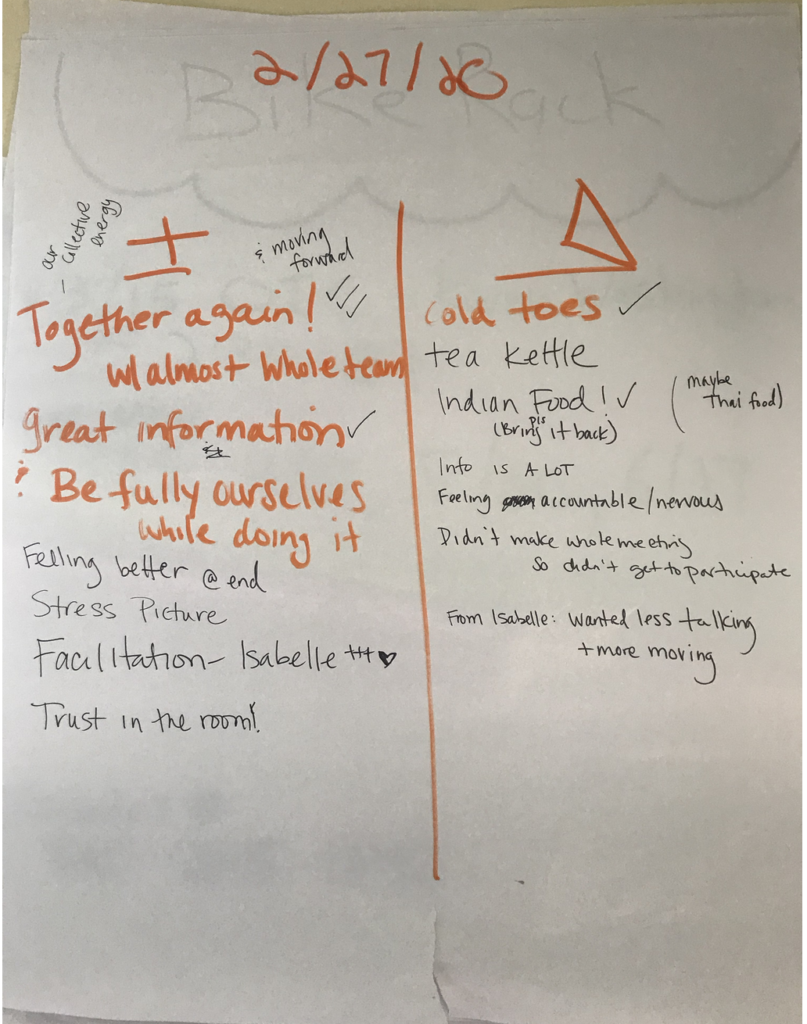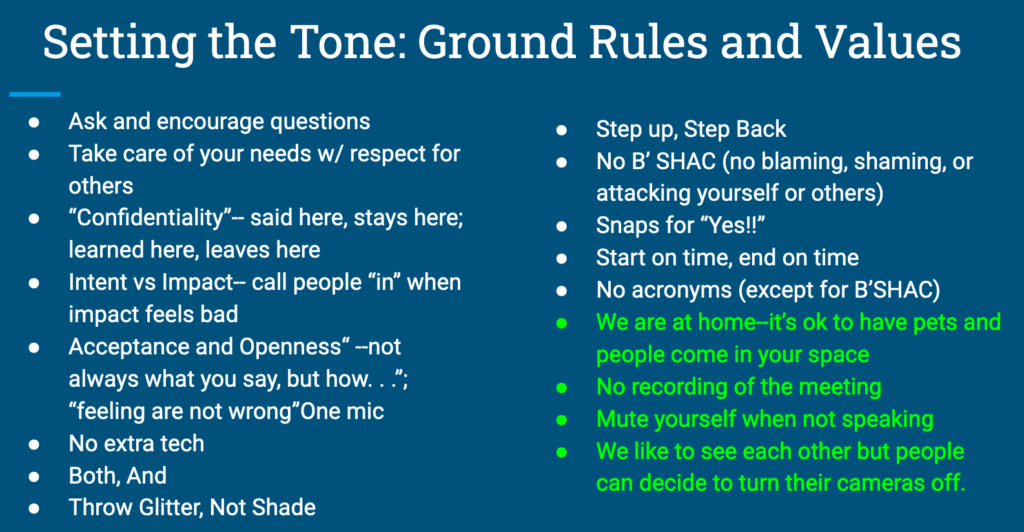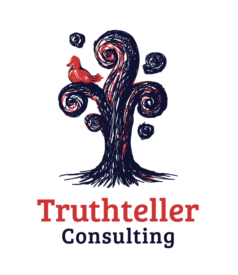Facilitator’s Agenda:
A detailed agenda template including content and cues for facilitators. A facilitator’s agenda differs from a participant’s agenda in that it contains notes and prompts that help the facilitator(s) move through each agenda item. It also includes prep work needed and materials.
This tool is most useful for longer meetings and trainings when staying on course can be a challenge and when transitions need to be managed. It is also helpful when there are several people working together. A key benefit is that if a facilitator cannot make an event– the rest of the presenters have a guide on how to continue.
A template version of the facilitator’s agenda can be downloaded here.

Rapid Evaluation:
This is done to capture what went well and what could have gone better. It is used to make the next meeting or training better and to show participants that what they want matter. Visually this method looks like the picture to the right. Things that went well are under the +. Things that could have gone better are listed under the triangle or delta.
Check marks can be used to indicate when an item is brought up by more than one participant.
This approach can be used for virtual meetings too. I often have a slide to show the concept and ask folks to share plusses and deltas in the chat. With a small group, everyone can get on a shared Google Doc or slide and populate the picture themselves.
Ground Rules (AKA Community Norms):
Ground rules define what participants need in order to feel safe and brave in a meeting space. These can be norms related to courtesy and expectations for how participants want to avoid or problem solve frustration or conflict.
The creation of ground rules with a group makes sense when:
1. Group participants don’t know each other and the meeting content requires authentic communication.
2. There will be content that will test self-management skills of participants. Anything having to do with equity and systems of oppression will fall into this bucket: (ex. race, racism, misogyny, LGBTQ rights).
3. There are one or two members of the group that are not behaving appropriately in a space. Ground rules can be used to name what is required and also used to connect with participants one on one or in the context of a meeting. Naming is critical to taking action in a transparent way.
4. Ground rules should not be used when there a toxic dynamic and people know each other unless an outside person, who has the power to hire and fire, is brought in to dismantle the toxic dynamics.
5. Ground rules are most powerful when they are co-created with the facilitator and participants.
In a physical in-person setting ground rules should be posted and clearly visible. In a virtual meeting they should be used as a consistent reminder and integrated into meeting slide decks when new people join and/or when the meeting content include items 1,2,and 3 above. When new people join the group, it is helpful to explain some of the ground rules with examples to assure that the meaning of each ground rule is clear.
An example of co-created ground rules that were adapted for virtual meetings is below.

